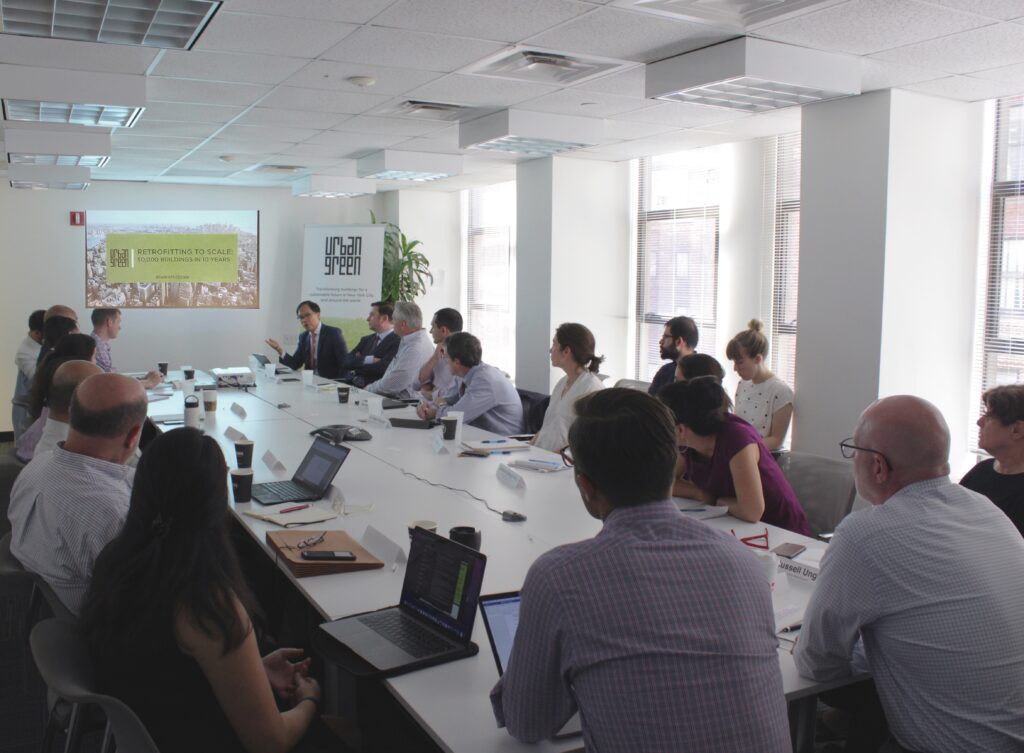How can carbon trading be used to unlock emissions reductions in NYC?

In May 2019, Urban Green launched the Global Climate Efficiency Trading Initiative, a collaboration that met over nine months to develop key questions and considerations for a carbon trading program for buildings.
With the passage of Local Law 97 in 2019, buildings need to meet increasingly stringent limits on how much carbon they can emit. Carbon trading would allow a building that is under its carbon limit to sell carbon “credits” to a building that is over its limit.
Through these convenings, we found that a carbon trading program could:
- Bring retrofit investments to buildings most in need.
- Allow building owners struggling to comply with LL97 to have multiple, cost-effective options.
- Create a monetary incentive for early, serious action to reduce greenhouse gas emissions.
Our carbon trading convenings contributed to our 2020 report, Trading: A New Climate Solution for Buildings. In 2021, NYU also released a carbon trading study required by Local Law 97.
Further reading
Trading: A New Climate Solution for Buildings
A trading program for NYC's buildings could lead to cost-effective carbon savings.
Unpacking the LL97 carbon trading study
NYU's carbon trading study, required by Local Law 97, is the first comprehensive modeling assessment of the law's costs and benefits.
A new way to tackle climate change with global peer cities
Introducing the Global Climate Efficiency Trading Initiative, a collaboration between building and energy stakeholders.